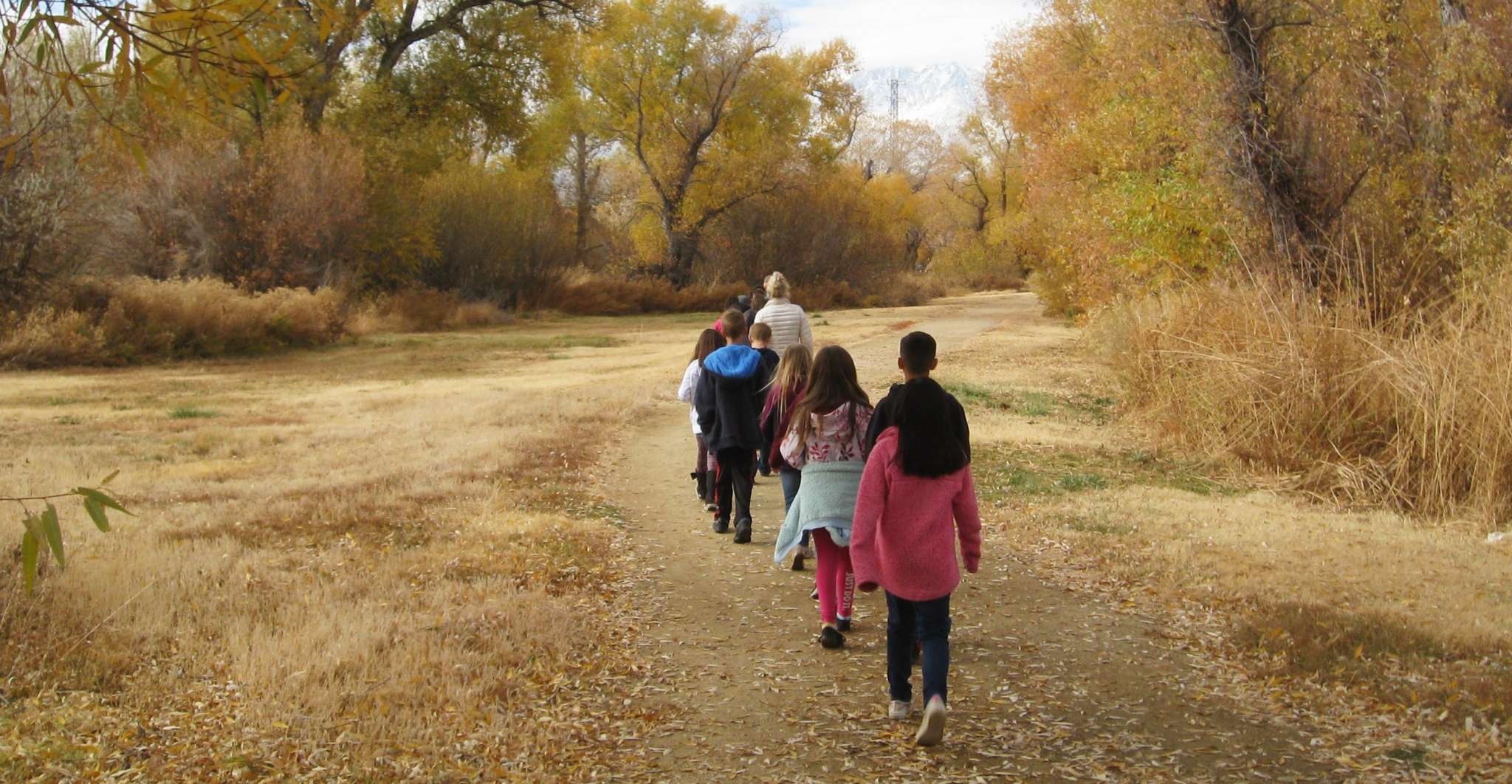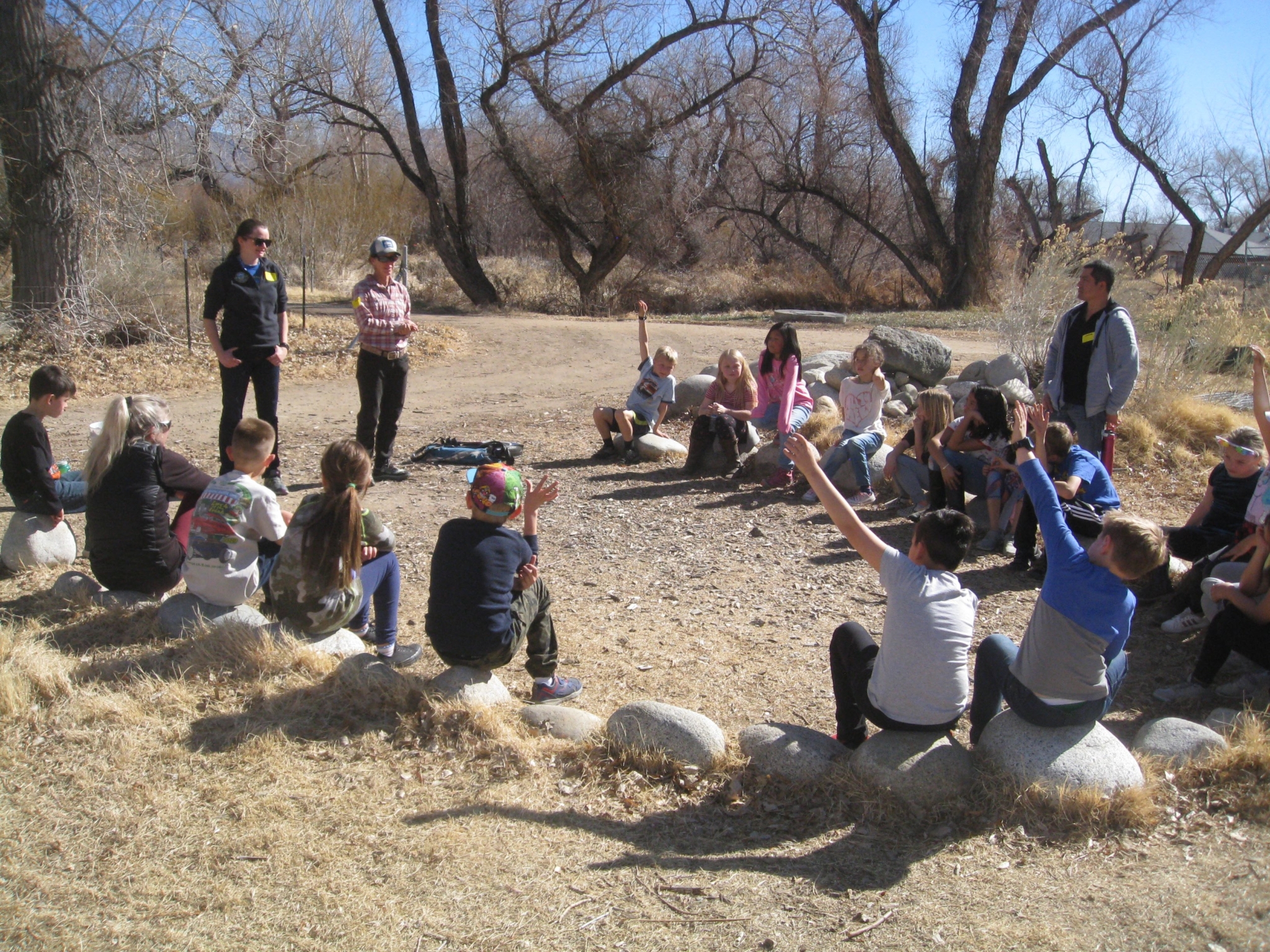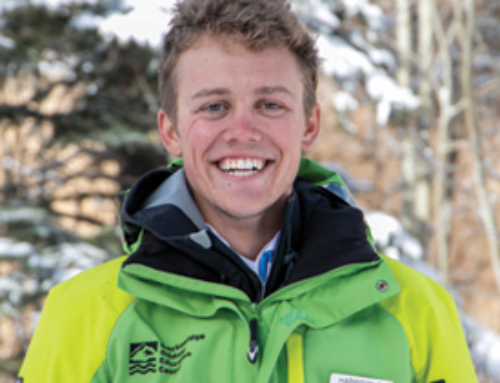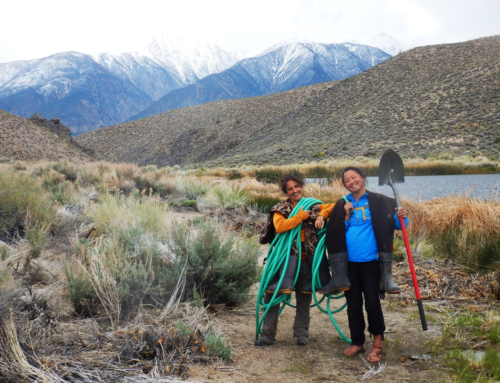
Kids explore the Bishop Paiute Tribe’s Conservation Open Space Area (COSA) with the Taking Root Program. Photo by Paul Williams.
By Marie Ring.
I’m constantly impressed with the youth in the Bishop area. Whenever I’m out teaching a lesson, I often feel like I learn just as much from the students as they’re hopefully learning from me. They’re caring, kind and inquisitive, and most importantly, they’re budding conservationists.
On a warm fall day, I approach what most people would describe as a common chain-link fence gate. But for the docents of the Taking Root program, it’s something else entirely.
The rowdy third grade class I’ll be teaching follows me across the busy schoolyard, and I try to avoid being hit by a stray ball as they yell to their friends at recess. As we approach the gate, a hush begins to fall over the students. It’s like I have an entirely different class.
We step through the gate and are rewarded by two red-shouldered hawks swooping over the class. The kids stare in awe. The only thing breaking the newfound silence is the screech of the hawks above. With just a few steps through that incredible gate, it seems like we’ve entered a different world.

Photo by Paul Williams
As a Taking Root docent, I have the privilege each month of taking two third-grade classes through this gate to the Conservation Open Space Area (COSA), a natural refuge owned by the Bishop Paiute Tribe. While we are out there, we learn different lessons about nature each month, from making observations of signs of fall to learning about bird behavior.
Taking Root not only provides the students with knowledge, but also allows them to connect to nature and appreciate the world around them.
One day, while walking back to the school after a lesson on animal tracks, one of the boys dropped back to the end of the line so he could talk to me. Before I could ask him if he enjoyed Taking Root, he started talking. He told me about how the COSA was one of his favorite places, and how after each lesson he would go home and ask his parents if they would go back there with him so he could explore all the trails.
He continued to tell me that normally in school he was a chatterbox and everyone else would tell him to be quiet, but when he was out in nature it was the opposite. He was the one telling everyone to be quiet.
“You hear so much more if you‚Äòre quiet!” he said.
Every month when I go back to the same class, he is always excited to tell me something new he discovered at the COSA or how his garden is pollinator-friendly and his favorite hummingbird always comes to the feeder his parents put out. This young student is not the only one who is clearly learning to love and listen to the nature around him through this program.
Every Taking Root lesson ends with “Magic Spots.” Students find a special spot by themselves and sit for 10 15 minutes completely silently. You would think that keeping a third-grader in one spot completely silent would be a near impossible task, but it isn’t. For many students, this is their favorite part of the whole Taking Root lesson and probably some of the quietest moments they have all month. When I started teaching this program, I never expected to have so many third grade students who would be that excited to quietly observe nature.
I think everyone can learn something from these amazing third graders. Don’t forget to take a step back, find a special spot and appreciate the natural world around you. You might be surprised at what amazing things you can find.
~~
Want to learn more about ESLT’s youth education programs and why they’re such an important part of Eastern Sierra conservation? Learn about our Community Connections Program at the link below.

Author Marie Ring is the Education Coordinator and AmeriCorps Member here at ESLT. If you have questions or want to get in touch with her, you can email her at .





